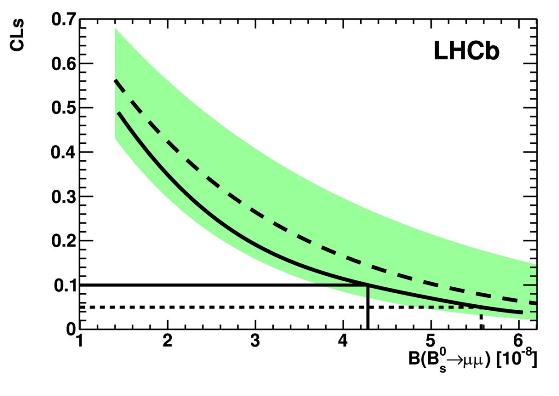Quantum mechanics allows energy non-conservation during a very short time, typical in particle collisions. This opens up the possibility to study signal for the existence of particles for which there is insufficient energy to produce them directly. This feature is used by LHCb physicists to search for heavy particles expected in new physics models – models that describe physics outside the Standard Model (SM) of particle physics. Since the effects of new physics are expected to be very small, LHCb physicists are looking for modifications of the properties of very rare SM processes which can be calculated with high precision. The rare decay of the strange beauty particle B0s, composed of a beauty antiquark (b) bound with a strange quark s, into a μ+ and μ– pair is an excellent candidate. Only one out of 3*109 B0s mesons should decay into a μ+μ– pair according to precise SM calcutions. This rate could be higher if new physics particles, such as those in models with an extended Higgs sector, for example, were to influence this decay.
LHCb physicists have not seen these decays in the data taken during the 2010 run and were able to set a limit which is about 19 times higher than the SM prediction, that is, the limit close to the one set by the Fermilab experiments CDF and D0 after many years of data taking. The figure below was used to set this limit at different levels of statistical probability.

click in the image to get it in higher resolution
LHCb physicists expect to observe the B0s mesons decay into μ+μ– pairs with the rate calculated within the SM using data taken this year and in 2012. An earlier observation of a higher rate will give interestng evidence for new physics.
Read more details in the CERN Courier article.
